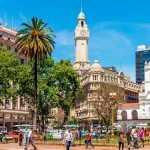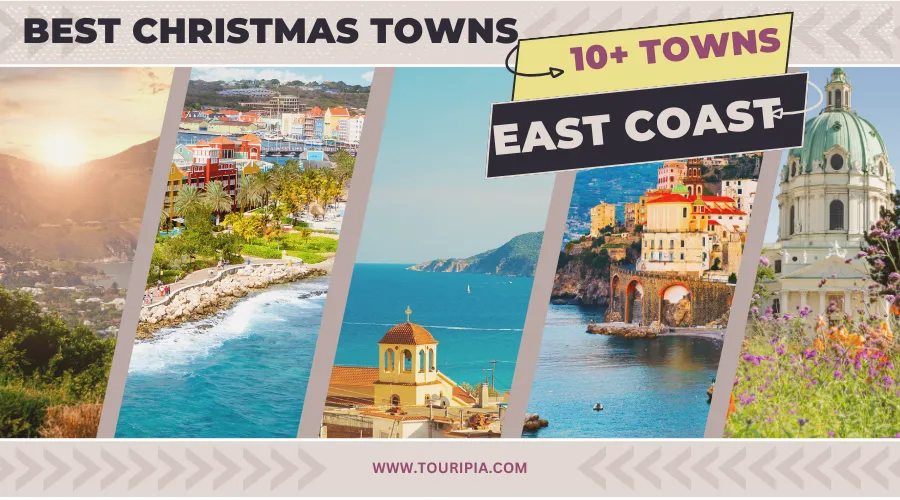Best European Winter Cities by Month: 12 Hidden Gems to See
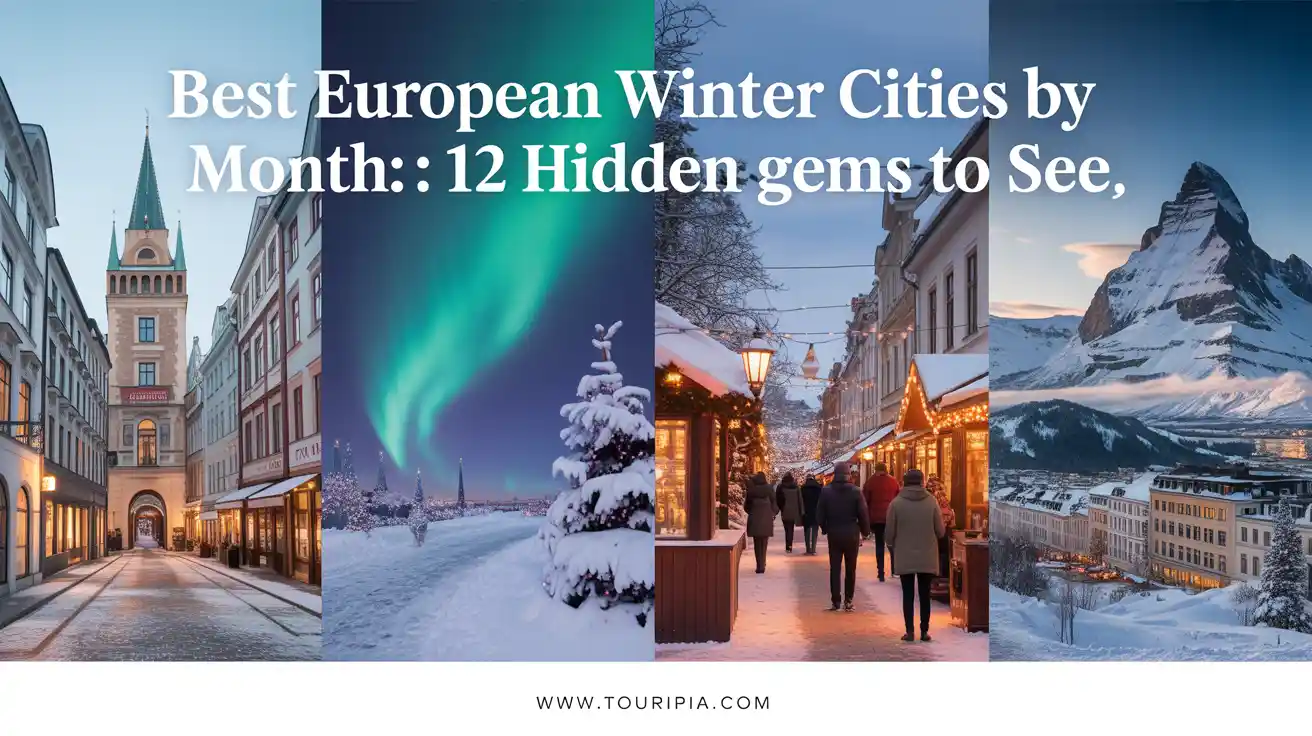
The best European winter cities by month aren’t the ones splashed across glossy brochures — they’re the tucked-away towns and under-the-radar capitals where the season feels authentic.
After more than a decade of hopping between continents, I’ve learned that Europe in winter tells a different story than it does in summer. Streets echo with Christmas carols instead of tour groups, snow dusts medieval rooftops, and steaming mugs of mulled wine replace rooftop cocktails.
During my travels, tourism boards from Tallinn to Granada often reminded me that “winter is when locals reclaim their cities.” They were right. I’ve wandered through cobblestoned alleys nearly empty in January, watched traditional parades in February that most outsiders don’t even know exist, and felt a kind of intimacy with a place that only comes when the crowds are gone.
These experiences convinced me that the hidden gems of Europe truly shine once the temperature drops.
In this guide, I’ll take you month by month, pairing each destination with the exact season when it feels most alive. You’ll discover markets glowing under fairy lights, quiet river cruises, mist-covered palaces, and alpine towns where the snow itself feels like part of the heritage.
By the end, you’ll know exactly which city to visit — and when — to experience Europe at its most magical.
This is your roadmap to the best European winter cities by month, written from firsthand journeys and countless conversations with locals who know their cities best.
How to Use This Best European Winter Cities by Month Guide?
Think of this article as your seasonal compass. Each month I’ve matched one or two destinations that capture a special winter atmosphere — from a medieval town wrapped in snow to a coastal port buzzing with festivals.
Planning travel this way keeps you from feeling overwhelmed and ensures you’re stepping into the right place at the right time.
Here’s why it works:
- Weather: Some spots are all about crisp, snowy days while others shine in milder early spring chills.
- Festivals & Culture: Knowing when local events happen means you catch authentic traditions, not tourist-made spectacles.
- Affordability: Off-season flights and hotels can drop by half compared to summer destinations.
- Romance & Vibe: Each city carries a mood — cozy cafés for couples, lively street markets for food lovers, or peaceful river walks for solo travelers.
I’ve also kept in mind practical elements like flight availability, shorter daylight hours, and how easily you can connect with locals during quieter months. While peak summer often overwhelms with tourists, winter gives you room to breathe — and to truly engage with the place you’re in.
So whether you’re sketching out a short trip or plotting an extended adventure, use these monthly pairings as inspiration. They’ll help you balance festivals, weather, and affordability while giving you a cultural depth that no checklist itinerary can offer.
Best European Winter Cities by Month (Dec–Feb)
1. January – Tallinn, Estonia
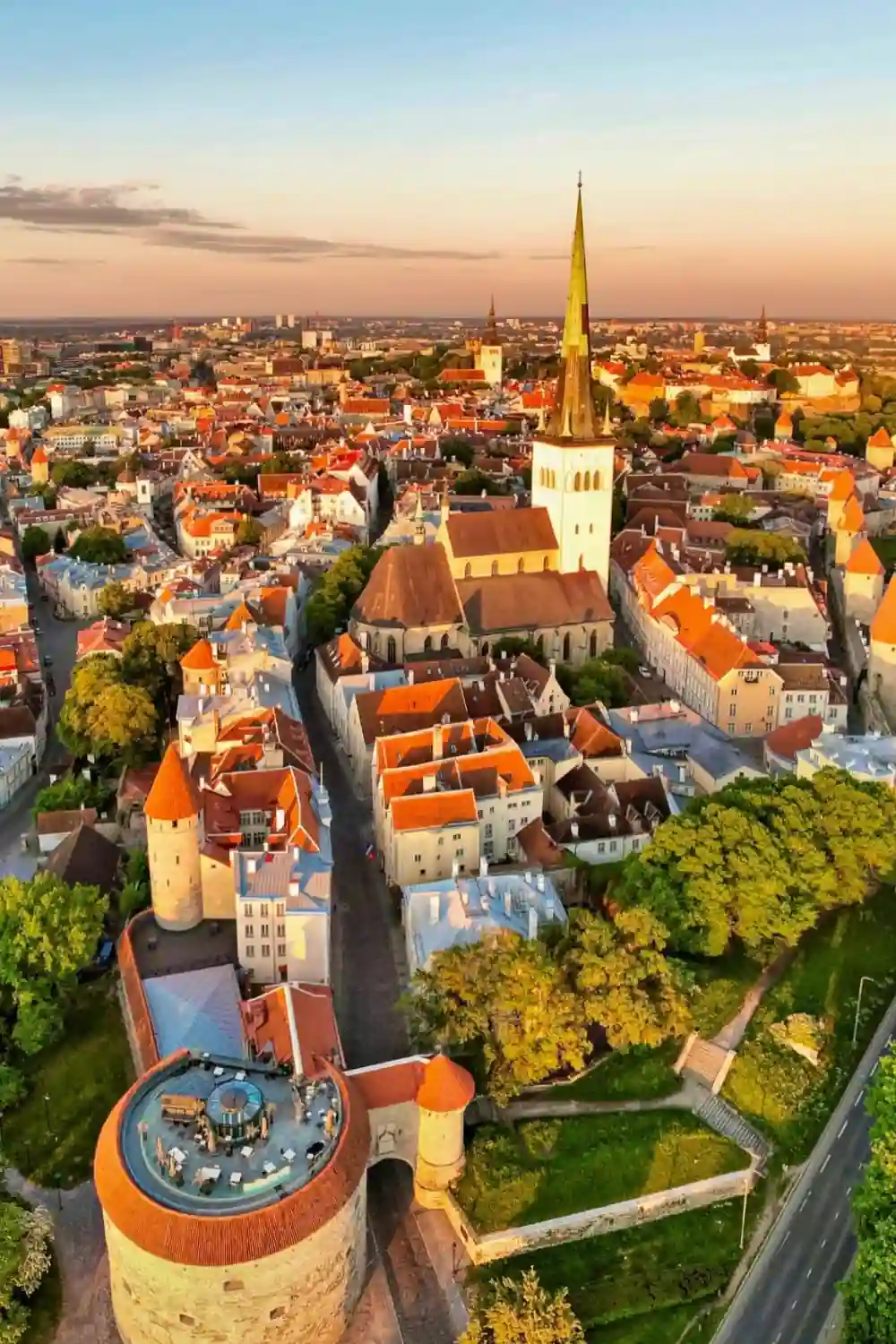
Tallinn in January feels like you’ve stepped straight into a storybook. The medieval old town, with its snow-dusted rooftops and Gothic spires, looks more like a film set than a real city. I still remember walking through Town Hall Square as the Christmas market lights dimmed for the season — locals sipping hot chocolate, children skating under lanterns, and barely a tourist in sight.
Why visit this month? Because Tallinn doesn’t just survive the cold, it celebrates it. The winter fairs are still in full swing, cafés serve warming Estonian stews, and the crisp Baltic air makes every walk through the cobblestone alleys unforgettable. Unlike many bigger capitals, Tallinn keeps its cozy charm intact.
Top winter activities include climbing the medieval city walls for snowy views, ducking into candlelit wine cellars, and exploring Kadriorg Palace gardens under frost.
For me, the real highlight has always been the small, family-run cafés where I’d thaw out with sweet pastries and strong coffee.
Insider tip: Skip the touristy spots near Viru Gate and find your way to Telliskivi Creative City. Even in January, locals gather here for art exhibits, live music, and hip cafés that keep the city buzzing long after dark.
2. February – Ljubljana, Slovenia
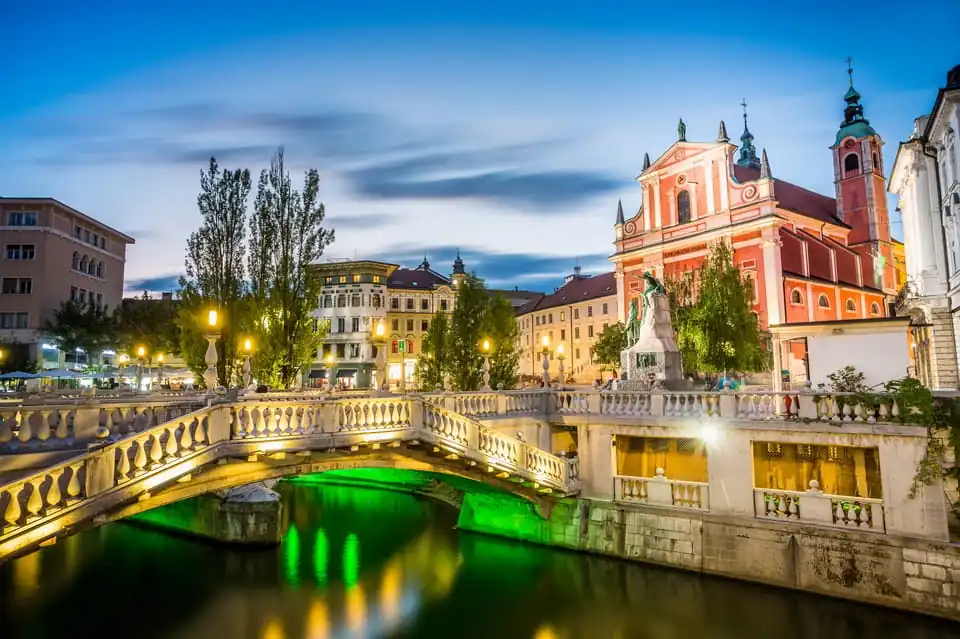
Ljubljana in February carries a quiet kind of romance. The city may not be the first on most travelers’ lists, but for those of us who’ve spent cold evenings wandering the riverside, it’s unforgettable.
The Dragon Bridge lights reflect on the icy Ljubljanica River, while couples stroll hand in hand through cobbled lanes dotted with candlelit cafés. For Valentine’s Day, the old town glows with lanterns, making it one of the most hidden gems for winter getaways in Europe.
What makes February special is the balance: enough winter chill to enjoy cozy indoor spots but a festive air that doesn’t feel forced. On my last visit, a local guide invited me to a small wine cellar tucked behind Stari Trg where Slovene wines warmed the evening better than any heater could.
Winter highlights include visiting Ljubljana Castle for panoramic snowy views, sampling štruklji (sweet dumplings) at riverside bakeries, and catching the Prešeren Day cultural festival if your trip aligns.
Insider tip: Stop at the Central Market even in winter. Farmers still bring in seasonal produce, and you’ll find small kiosks serving hot mulled drinks — the kind locals sip before heading to evening concerts.
3. March – Innsbruck, Austria

By March, the Alps begin to hint at spring, but in Innsbruck, ski season is still alive. Nestled in the Swiss Alps region, this Austrian city feels like a gateway between winter’s thrill and spring’s renewal.
I remember waking up to sunlight bouncing off snow-capped peaks, then wandering into Maria-Theresien-Straße where the cafés were already setting out chairs for early spring markets.
Why March? Because Innsbruck gives you the best of both worlds. You can spend the morning skiing Nordkette, then descend into the city for spring festivals and lighter evenings.
I once joined local families at the Bergisel ski jump arena — not as a skier, but as a spectator wrapped in a blanket with a steaming cup of glühwein, cheering like I’d lived there my whole life.
Winter activities here stretch beyond the slopes: thermal spa culture thrives in the valleys, where hot springs bubble just outside town. A dip after a cold alpine hike is an absolute must.
Insider tip: Take the Hungerburg funicular just before sunset. The ride itself is stunning, and at the top, the view of Innsbruck glowing against snowy peaks feels like a postcard you’ll never want to send.
4. April – Gdańsk, Poland
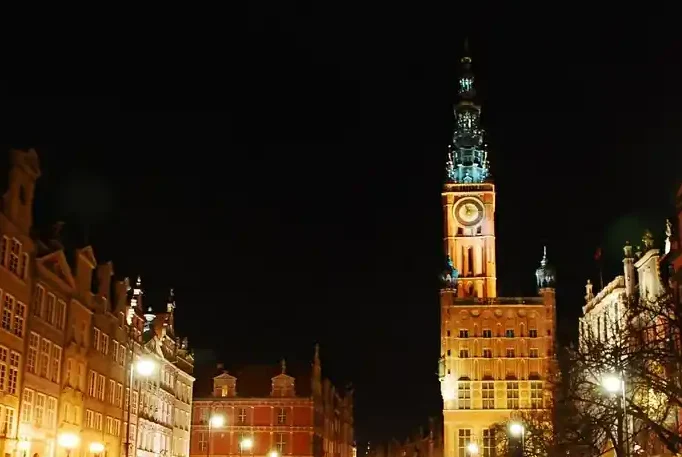
April in Gdańsk is a study in contrasts. The air still carries a winter chill, yet tulips begin blooming across the city squares, hinting at spring.
For travelers chasing shoulder season charm, this is the perfect window — crowds are thin, prices are low, and the Baltic Sea breeze is invigorating without being harsh.
One of my favorite memories is browsing the amber stalls along Dlugi Targ, bargaining gently with local vendors who had more time to chat than in the busier months. These amber markets feel like a direct connection to the city’s maritime past, and April gives you the luxury of browsing in peace.
Top experiences include touring the medieval crane at the waterfront, stepping into St. Mary’s Basilica for warmth and grandeur, and visiting the Solidarity Museum — where history feels raw and immediate. Evenings often led me to cozy taverns serving pierogi and honey-flavored vodka, with locals happy to share stories of the city’s resilience.
Insider tip: If you enjoy photography, wake up early. The rising sun over the Motława River creates pastel reflections that only April skies seem to produce. It’s one of those moments where you realize you’re walking through a city that blends grit and beauty effortlessly.
5. May – Sibiu, Romania

Sibiu in May feels like stepping into a quiet Gothic painting where spring is just settling across the Carpathian backdrop. The chill hasn’t completely left, which means you’ll still need a light coat, but flowers begin to spill across Piata Mare, and festivals kick off in earnest.
I spent a week here one May and was struck by how alive the city felt without being crowded. Street musicians filled the squares, and students gathered at cafés under those iconic “eyes of Sibiu” rooftops.
Why May? It’s when Sibiu blends the remnants of winter coziness with the joy of cultural renewal. You’ll find art festivals, folk markets, and plenty of excuses to linger in the pastel-colored streets.
For me, evenings often meant sitting with locals over a glass of Romanian wine, learning about traditions that don’t make it into guidebooks.
Top experiences include climbing the Council Tower for sweeping views, wandering the Bridge of Lies, and catching an open-air theater performance if your timing is right.
Insider tip: Head to the ASTRA Museum of Traditional Folk Civilization just outside town. In May, the grounds are green and peaceful, and the wooden churches and windmills are easier to explore without summer tourist lines.
6. June – Ghent, Belgium

While most travelers flock to Bruges in June, Ghent quietly shines as one of the best European winter cities by month that transitions gracefully into early summer. By this time, warmth has arrived, but the crowds are still manageable.
I remember biking along the canals under a late evening sun, with just a few locals sipping beers on the Graslei waterfront.
June in Ghent feels like a reward for those who appreciate subtler beauty. The city balances its medieval architecture with a youthful, artistic edge — graffiti alleys, student-run cafés, and small galleries open their doors with new exhibits. It’s not yet overrun with peak-season tourists, which means better prices and easy reservations at local bistros.
Highlights include visiting Gravensteen Castle, climbing the Belfry for city views, and exploring the canals by boat. Though not winter anymore, Ghent remains a perfect short trip for travelers looking to avoid mainstream summer destinations without losing atmosphere.
Insider tip: Skip the tourist-marketed restaurants and head for the Patershol district. Even in June, the narrow streets stay calm, and family-owned spots serve traditional Flemish stews alongside Belgian beer that tastes infinitely better on a warm evening.
7. July – Reykjavik, Iceland
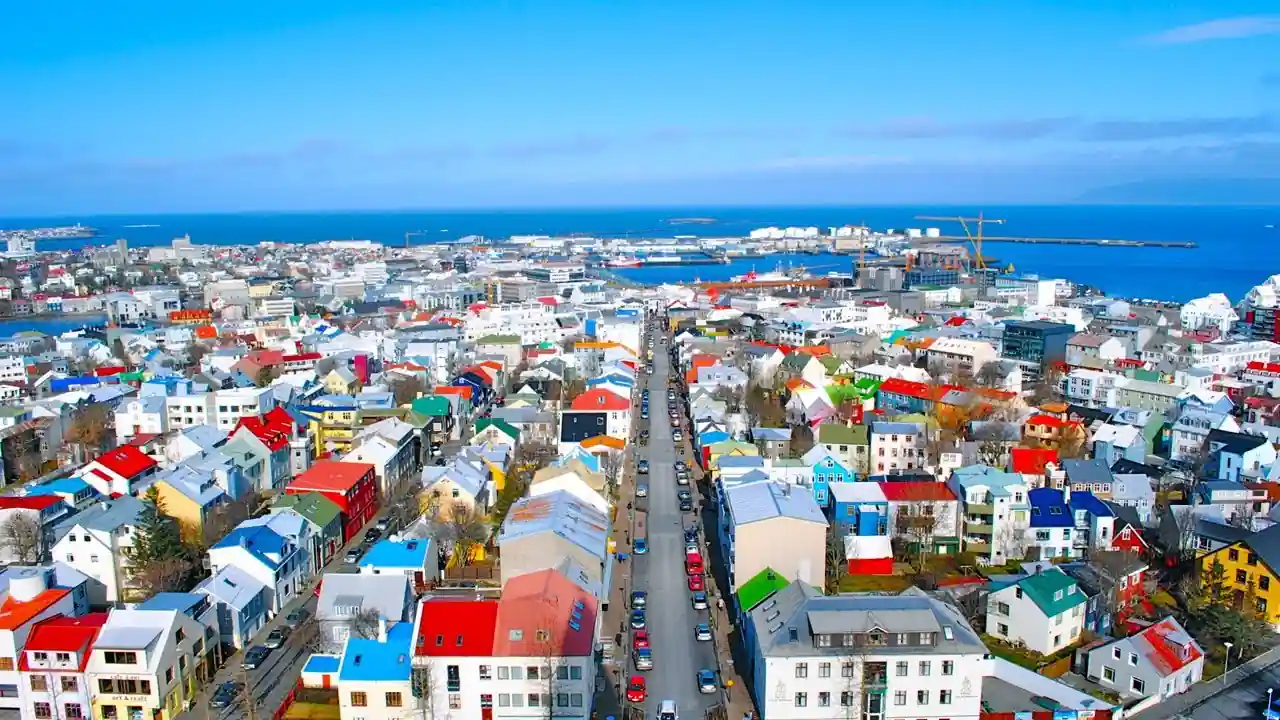
Reykjavik in July isn’t your typical summer trip — and that’s exactly why it belongs in this guide. Despite the season, the air remains cool, and the midnight sun creates long, surreal days perfect for exploration.
I’ve visited twice in July, and both times I felt like the city was buzzing yet never overwhelming. Festivals fill the streets, and day trips take you from glaciers to geysers in just a few hours.
Why July? Because Reykjavik offers the ultimate balance: vibrant cultural events in town and easy access to Iceland’s dramatic landscapes.
On one trip, I joined a local friend for a music festival, then found myself soaking in a natural hot spring just outside the city the very next morning. The Blue Lagoon is iconic, but hidden pools like Reykjadalur Valley provide a far more authentic soak.
Top experiences include exploring Hallgrimskirkja’s tower views, visiting Harpa Concert Hall for live performances, and taking excursions to waterfalls or volcanic landscapes that feel like another planet.
Insider tip: Don’t skip the midnight whale-watching tours. Standing on deck as the sun barely dips below the horizon, spotting whales against the glowing sky, is an experience that reminds you why Iceland is unlike anywhere else in Europe.
8. August – Riga, Latvia
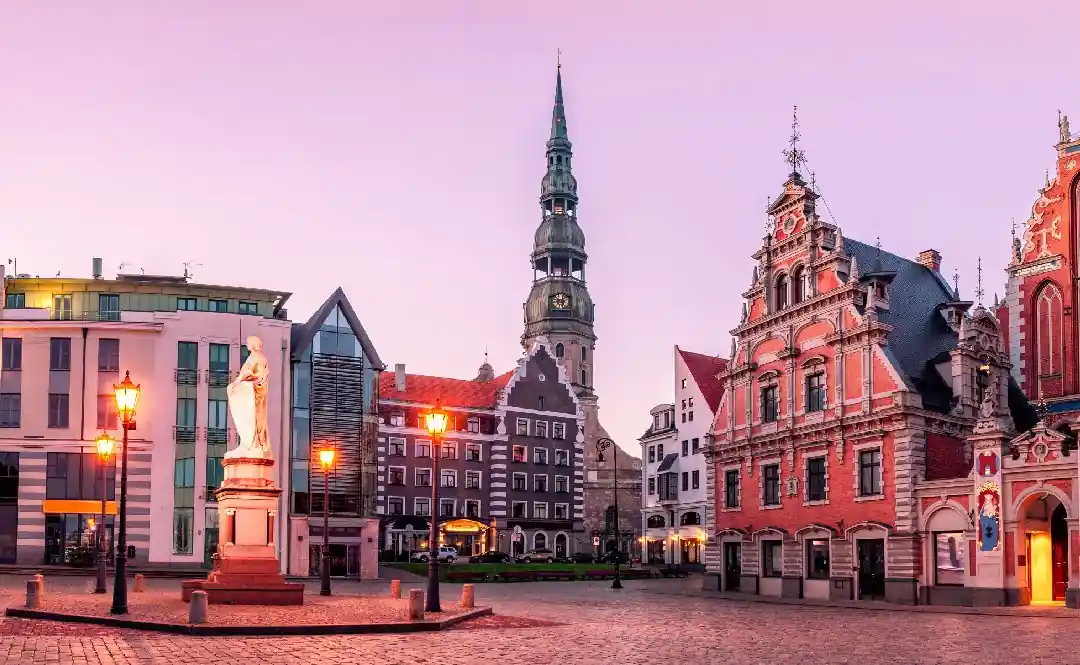
Riga in August is a city that quietly surprises you. Prices are still far more affordable than in Western Europe, yet the city brims with life through its summer music and art festivals.
When I visited during late summer, I remember wandering through Bastejkalna Park as jazz musicians played beneath the trees and couples lounged along the canal banks. It’s that blend of cultural richness and accessibility that makes Riga one of those hidden gems for winter getaways that also shines brightly in August.
Why August? The weather is mild, perfect for walking the UNESCO-listed Old Town where pastel façades glow in the evening sun. Street art tours are in full swing, and rooftop bars like those near St. Peter’s Church offer sweeping views at sunset.
I once ended a night in Riga at a small folk festival where locals danced in traditional attire — an experience far removed from the usual tourist circuit.
Top experiences include visiting the Art Nouveau district, sampling Latvian rye bread and smoked fish at the Central Market, and attending open-air concerts.
Insider tip: Don’t miss the free organ concerts inside Riga Cathedral. The acoustics are astonishing, and sitting in that grand space on a quiet August evening feels timeless.
9. September – Porto, Portugal

If you’ve ever dreamed of experiencing a wine harvest firsthand, September in Porto is your chance. This is the month when the Douro Valley comes alive with grape picking, and the city itself leans into celebration.
On my last visit, I joined locals for a romantic Douro river cruise as vineyards rolled by in hues of green and gold. Porto in September balances warm evenings with cool breezes off the Atlantic, creating an atmosphere that’s both lively and intimate.
Why September? Because you get a perfect balance: the chaos of summer has ended, yet the city is buzzing with harvest season energy. I’ve spent evenings here sipping port wine at family-owned lodges in Vila Nova de Gaia, listening to owners share stories passed down for generations.
These kinds of experiences remind me why Porto deserves its place in a guide on the best European winter cities by month — it thrives in every season, but September feels particularly special.
Top experiences include climbing the Clerigos Tower, strolling the Ribeira district at dusk, and tasting fresh seafood in Mercado do Bolhão.
Insider tip: Take a day trip out to Pico do Arierio on Madeira if you have the time and budget. The mountain trails at sunrise deliver a view so staggering that even seasoned travelers like me stop in silence just to take it in.
10. October – Kraków, Poland

October in Kraków is draped in autumn colors, and the city’s rhythm slows into something deeply atmospheric.
Walking through Planty Park as leaves crunch underfoot, you’ll find yourself drawn into cozy cafés where the scent of hot chocolate and apple cake fills the air. But what really defines Kraków in October is tradition — the build-up to All Saints brings candlelit cemeteries and a reverence that feels deeply rooted in Polish culture.
Why October? Because you get the best of autumn’s beauty without the crowds of peak summer. I remember visiting Wawel Castle on a misty morning, nearly alone, with the Vistula River below glowing in muted gold. Later, I joined locals carrying flowers to Rakowicki Cemetery, a humbling and beautiful cultural moment few travelers witness.
Highlights include exploring the Jewish Quarter of Kazimierz, ducking into cellar bars with live folk music, and catching the early start of Kraków’s film season. For me, the blend of history, tradition, and autumnal charm makes October unforgettable.
Insider tip: Visit the Cloth Hall in Rynek Główny during the evening. The market is quieter, and the glow of the square under lanterns creates one of the most romantic ambiances I’ve found anywhere in Central Europe.
11. November – Granada, Spain

Granada in November carries a kind of mysterious quiet that I’ve always loved. The streets are cool, mist often lingers over the Alhambra, and the tapas bars feel more local than touristy.
I spent one November walking up the Albaicín just after sunrise, the sound of church bells echoing through narrow alleys, with barely another traveler in sight.
Why November? Because the cooler temperatures strip Granada back to its essence. You can explore the Alhambra without the suffocating summer heat, wander through spice-scented markets, and sip tea in Moorish-style teterías that feel centuries old. For those craving hidden gems in Spain, this is when Granada’s authentic heart shines.
Top experiences include strolling through the Alhambra gardens shrouded in mist, exploring Sacromonte’s cave houses with flamenco performances, and making a side trip to Puerto Banus on the Costa del Sol — far quieter this time of year, yet still offering a glimpse of luxury living.
For those craving hidden gems, this is when Granada’s authentic heart shines. And if you want to balance misty palaces with sunshine, many travelers pair Andalusia with a quick hop to the Canary Islands, where volcanic landscapes and golden beaches give you a completely different side of Spain in winter.
Insider tip: Don’t miss a visit to the Alcazar Palace in nearby Seville if you have the time. In November, the crowds are thin, and the golden autumn light streaming into its courtyards feels magical.
12. December – Colmar, France

If there’s a city that feels like Christmas itself, it’s Colmar in December. I’ve wandered its half-timbered streets lit by fairy lights, hot mulled wine in hand, and it’s impossible not to feel like you’ve stepped inside a storybook.
The Christmas markets here are legendary — not just for their beauty, but for their authenticity. Locals still shop for handmade gifts, and Alsatian treats fill the air with sweet aromas.
Why December? Because Colmar transforms into one of the best European winter cities by month you could possibly experience. Unlike larger cities, the markets here retain a personal charm. I once followed the sound of carolers into a small square and ended up spending an hour listening alongside families who’d lived in Colmar for generations.
Highlights include wandering the Petite Venise district under twinkling lights, sampling bretzels and spiced gingerbread, and sipping Alsatian wines in cozy taverns. The city feels intimate, festive, and endlessly photogenic.
Insider tip: Base yourself at a boutique stay like Casa Mae Boutique Hotel if you’re planning a longer Alsace trip. While better known in Portugal, the name has become synonymous with stylish, warm hospitality — perfect for winter comfort.
Seasonal Breakdown: Europe in Winter at a Glance
Traveling through Europe in winter is not a one-size-fits-all experience. Each part of the season has its own flavor, and knowing this helps match your mood to the right city.
- Early Winter (November–December): This is when Europe feels like a fairytale. Christmas markets come alive, from Colmar’s glowing squares to Vienna’s sprawling stalls. It’s also the best time to pair city travel with excursions — think thermal baths in Budapest after wandering snowy boulevards, or visiting the Roman Theatre in Mérida under soft winter light.
- Mid-Winter (January–February): If snow is what you seek, head north. Tallinn’s medieval streets sparkle under frost, while Ljubljana delivers romantic riverside strolls perfect for couples. Ski towns like Innsbruck keep alpine traditions alive, and evenings are best spent in steaming thermal spa complexes or dipping into secluded hot springs that warm the bones.
- Late Winter/Early Spring (March–April): For travelers who crave affordability and authenticity, this is prime shoulder season. Innsbruck blends snowy slopes with spring markets, while Gdańsk offers crisp mornings and tulip-filled afternoons. Flights are cheaper, crowds are fewer, and the cultural calendar starts to pick up.
- Couples Tip: Match your season to your mood. For romance, December’s fairy lights and Colmar’s magic can’t be beat. For adventure, January’s snow in Estonia and Austria delivers. For culture at a slower pace, spring in Poland or Romania invites you to linger without rush.
From snowy Swiss Alps adventures to soaking in Iceland’s volcanic pools, winter in Europe is about more than enduring the cold — it’s about embracing the rhythm of a continent that reveals its soul when the crowds fade.
If snow is what you seek, head north. Tallinn’s medieval streets sparkle under frost, while Ljubljana delivers riverside romance. But if you’d rather swap frost for warmth, the Canary Islands give you endless sun in January and February.
I’ve spent winters in Gran Canaria, wandering through cliffside villages in the morning and swimming in Atlantic coves by afternoon.
Travel Tips for Exploring Europe in Winter

Over the years, one thing I’ve learned is that Europe in winter rewards those who come prepared. The right gear, timing, and mindset can turn a cold, gray day into a magical memory.
Here are my essential tips, drawn from countless trips across the continent.
Packing Essentials:
- Layers: A thermal base, fleece mid-layer, and waterproof outer shell keep you ready for sudden weather changes.
- Footwear: Waterproof boots are a must — I learned this the hard way walking through slush in Kraków.
- Extras: Gloves, a power bank, and travel insurance (for flight delays) should never be overlooked.
Booking Strategies:
- Aim for shoulder season deals in March or April when flights are cheaper.
- Bundle stays — many boutique hotels offer discounts when you book directly.
- For long weekends, consider secondary airports. A flight into Beauvais instead of Paris Charles de Gaulle can cut your costs nearly in half.
Weather Navigation:
Winter storms can throw off trains and flights, but locals often have the best solutions. In Spain, I was stranded due to a train strike and a fellow traveler suggested I head south to explore Corralejo National Park in the Canary Islands. That detour turned into one of my favorite discoveries, walking dunes that felt more Saharan than European.
In Spain, I was stranded due to a train strike and a fellow traveler suggested I head south to explore Corralejo National Park in the Canary Islands. That detour turned into one of my favorite discoveries, walking dunes that felt more Saharan than European.
On another trip, I based myself in Gran Canaria, which surprised me with its microclimates — sun on the coast, mist in the mountains, and local markets buzzing year-round.
Embracing Slower Travel:
Winter isn’t about rushing. I’ve spent entire afternoons in Budapest’s thermal baths, or whole evenings at tapas bars in Granada with no agenda. Slower travel lets you feel the rhythm of a city — whether it’s watching the Eiffel Tower sparkle in the quiet of January or hiking the volcanic trails of Timanfaya National Park in Lanzarote when the summer crowds are gone.
Final Thoughts
Looking back at years of journeys across the continent, I can say with confidence that the best European winter cities by month aren’t always the obvious ones. They’re the hidden gems where a city’s true character comes alive once the tourist rush fades.
Whether it’s sipping mulled wine under fairy lights in Colmar, soaking in hot springs outside Reykjavik, or wandering misty streets toward the Roman Theatre in southern Spain, winter gives these places a kind of authenticity you’ll never find in peak summer.
Each month offers something different: January’s snowy medieval charm in Tallinn, February’s romantic glow in Ljubljana, March’s alpine adventures paired with a thermal spa, and April’s quiet amber markets in Gdańsk. By the time you reach December, cities like Colmar transform into living storybooks — where even seasoned travelers like me still feel a childlike wonder.
Winter in Europe also reshapes how you travel. Instead of chasing long days of sunshine, you lean into candlelit evenings, festivals that locals actually attend, and landscapes that feel both harsh and breathtaking. I’ve learned that traveling slowly — whether through Portugal’s Douro Valley during wine harvest, or watching volcanic trails steam in Timanfaya National Park — reveals not just scenery, but stories.
So, if you’re planning your next trip, don’t just default to the typical summer destinations. Let the rhythm of the seasons guide you.
Match your month to your mood, pack a little warmer, and embrace the chance to see Europe at its most intimate.
Because beyond the postcards and itineraries, the real magic lies in the quiet streets, the winter festivals, and the hidden corners where Europe feels like it belongs to you alone.
Frequently Asked Questions
1. Is winter travel in Europe safe for budget travelers?
Yes. With fewer crowds, you’ll find cheaper hostels and food deals. I’ve stayed in central Kraków for less than half the summer rate.
2. Which cities are best for snow?
Tallinn, Innsbruck, and parts of Switzerland never disappoint. The Swiss Alps in January or February guarantee postcard views.
3. How do I avoid tourist traps in winter?
Stick to local neighborhoods. In Seville, for example, head to Triana instead of the cathedral square. If you’re there in spring, try to catch Feria de Abril — it’s as authentic as festivals get.
4. Can I see the Northern Lights while on a city trip?
Yes, in Reykjavik during mid-winter. I’ve taken tours just outside town and seen the sky light up in green.
5. What’s the best time to book flights for winter in Europe?
Three to four months ahead usually secures the best deals. For December, I book by late August.
6. Are thermal spas really worth it?
Absolutely. Whether it’s Iceland’s Blue Lagoon or Hungary’s Széchenyi Baths, these spots are more than tourist gimmicks — they’re cultural traditions.
7. Do museums close in winter?
Rarely. In fact, winter is when I’ve had entire galleries to myself, like the Prado in Madrid on a misty November morning.
8. Can I combine city trips with nature in winter?
Yes. Porto pairs well with vineyard tours, Reykjavik with geysers, and Seville with day trips to the Sierra Nevada.
9. How do locals spend winter evenings?
Cafés, taverns, and cultural events. I’ve joined everything from fado nights in Lisbon to folk dance evenings in Sibiu.
10. Is it better to visit Paris in summer or winter?
For me, winter. The Eiffel Tower at night in January, with barely a line to go up, is a memory far richer than fighting through July crowds.
Recent Posts
 Tubeseferi: 7 Must-Know Features for Smart City Travel in 2025
Tubeseferi: 7 Must-Know Features for Smart City Travel in 2025 What Is Antolohe? Hidden Travel Meaning Revealed for 2025
What Is Antolohe? Hidden Travel Meaning Revealed for 2025 How to Become a Travel Agent Without Experience?
How to Become a Travel Agent Without Experience? 15 Best Airlines for Long Flights in 2025: Comfort, Cuisine, and Sky-High Service
15 Best Airlines for Long Flights in 2025: Comfort, Cuisine, and Sky-High Service Day Trips from Buenos Aires: Surprising Routes Off the Tourist Trail
Day Trips from Buenos Aires: Surprising Routes Off the Tourist Trail




